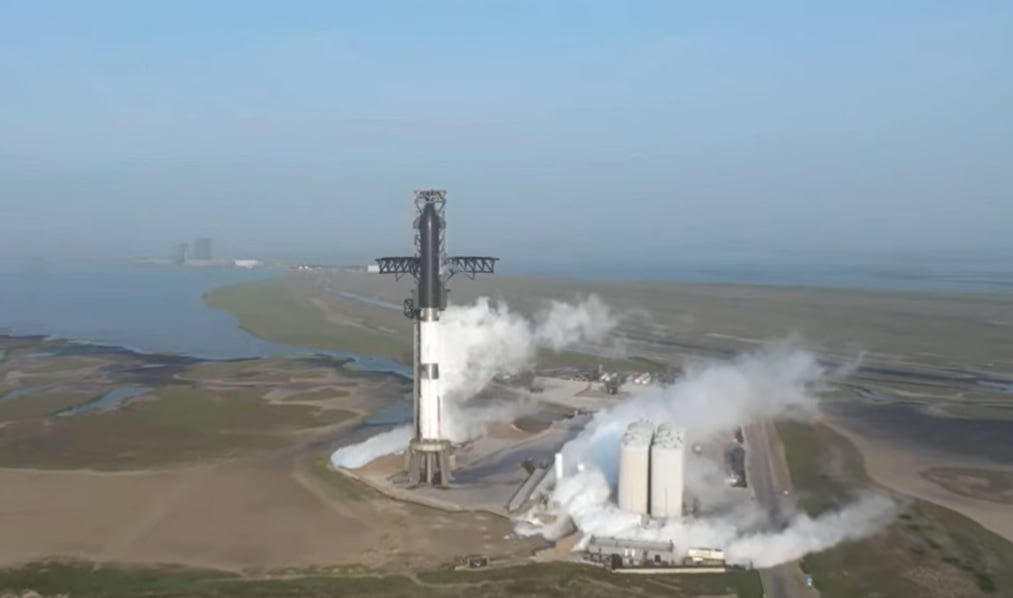 Starship is almost 120m (400ft) tall and has a thrust power that is almost double that of any other rocket ever built. Credit: Video screenshot/Space X
Starship is almost 120m (400ft) tall and has a thrust power that is almost double that of any other rocket ever built. Credit: Video screenshot/Space XElon Musk’s SpaceX launched on Thursday the inaugural test flight of Starship, the most powerful rocket ever created and the vehicle that could one day return astronauts to the moon or — perhaps — propel the first trip to Mars.
The Starship test flight is now over, after experiencing what engineers have called a “rapid unscheduled disassembly” during ascent.
“To make it this far is amazing,” engineers say, after the rocket cleared its tower and successfully lifted off. “You never know what’s going to happen,” they say, adding that “Starship gave us an exciting end to an incredible test”.
The first attempt on Monday came to a halt after a problem with a valve created pressurization issues. Engineers opted from there to treat the remainder of the launch attempt as a “wet dress rehearsal,” or a practice run that takes teams through all the steps for launch — except liftoff.
Starship is almost 120m (400ft) tall and has a thrust power that is almost double that of any other rocket ever built. The goal of this uncrewed mission is to send the upper stage of the rocket eastward to complete almost one circuit of the globe.
Elon Musk’s SpaceX constructed the world’s tallest rocket launch
To date, the SpaceX team has completed multiple sub-orbital flight tests of Starship’s upper stage from Starbase, successfully demonstrating an unprecedented approach to controlled flight.
These flight tests helped validate the vehicle’s design, proving Starship can fly through the subsonic phase of entry before re-lighting its engines and flipping itself to a vertical configuration for landing.
In addition to the testing of Starship’s upper stage, the team has conducted numerous tests of the Super Heavy rocket, which include the increasingly complex static fires that led to a full-duration 31 Raptor engine test – the largest number of simultaneous rocket engine ignitions in history.
The team has also constructed the world’s tallest rocket launch and catch tower. At 146 meters, or nearly 500 feet tall, the launch and catch tower is designed to support vehicle integration, launch, and catch of the Super Heavy rocket booster.
No vertical landing of Starship this time
For the first flight test, the team will not attempt a vertical landing of Starship or a catch of the Super Heavy booster.
SpaceX plans to eventually make both the booster and the ship reusable, allowing them to be refueled and relaunched. The company has been testing different methods of constructing steel vehicles at Boca Chica, where several models are waiting for their turn to take off.
NASA is one of the most interested parties in the project and has given SpaceX nearly $3bn to develop a version of Starship that can transport astronauts to the Moon.
Development of Starship has been based at the SpaceX Texas spaceport, about 40 minutes outside Brownsville, on the US-Mexico border.
Testing began years ago with brief “hop tests” of early spacecraft prototypes. The company started with short flights that lifted a few dozen feet off the ground before progressing to high-altitude flights, most of which resulted in dramatic explosions as the company attempted to land the prototypes upright.

 1 year ago
75
1 year ago
75











 English (US)
English (US)